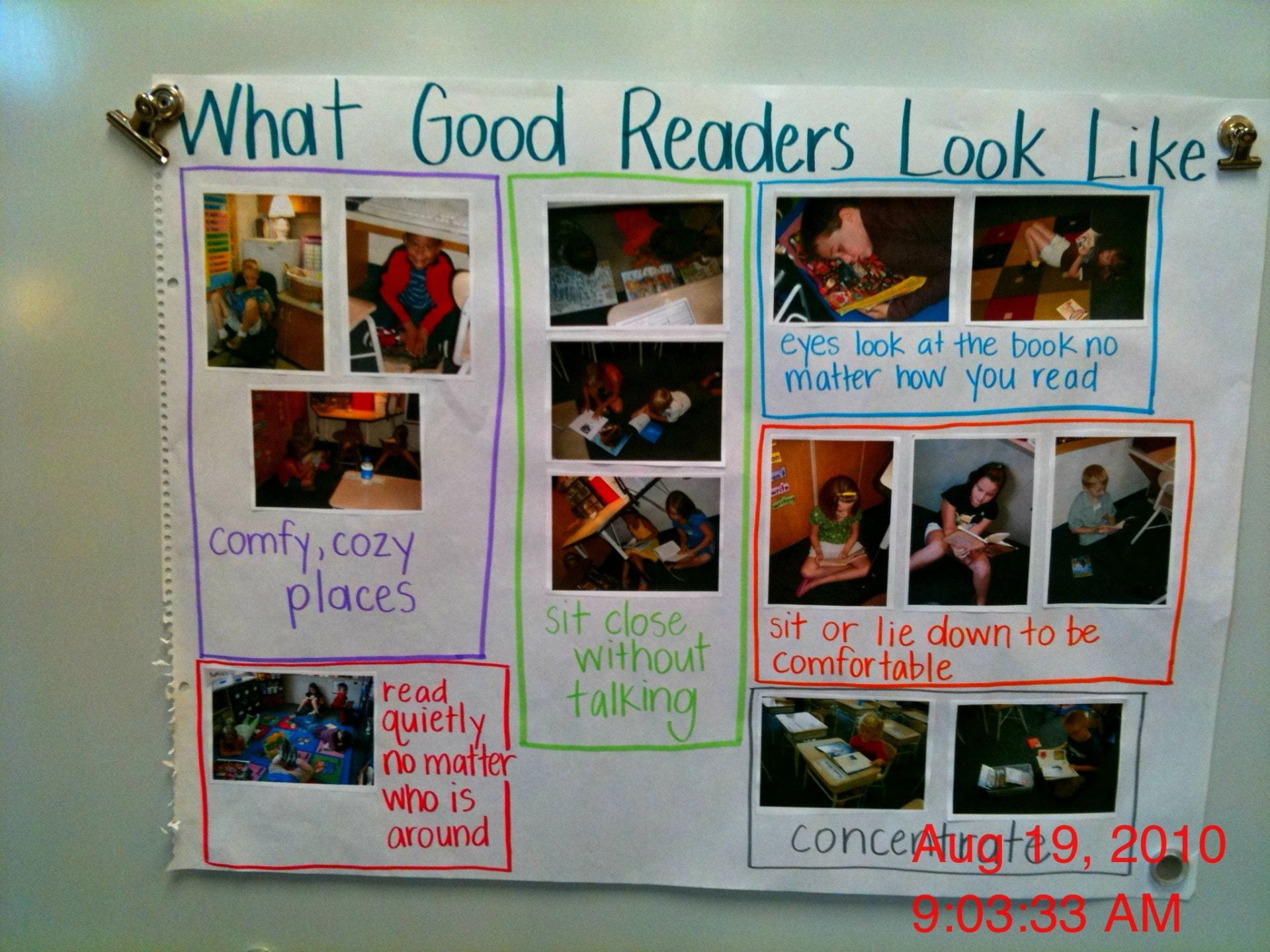by C. Elkins, OK Math and Reading Lady
This is part 2 of a series about reading routines I believe are important. The focus in this post will be on establishing a daily independent reading time. This independent reading time (or partner reading) will help extend some of the benefits of your read aloud routine.
According to Houghton Mifflin, “Research into effective literacy instruction has often noted that the best teachers of reading have an extensive collection of books in their classrooms (Allington & Gabriel, 2012; Morrow & Gambrell, 1998; Reutzel & Fawson, 2022). In large-scale national studies, researchers found that students in more effective teachers’ classrooms spent a larger percentage of reading instructional time actually reading; additionally, exemplary teachers were more likely to differentiate instruction using their book collections, so that all readers had books they could read accurately and fluently, with understanding and motivation (Allington & Gabriel, 2012).” This comes from an excellent, easy read from Houghton Mifflin Harcout: The Value of Independent Reading: Analysis of Research
What are the benefits? The child . . .
- Gets a choice in what he/she reads.
- Is able to practice concepts of print.
- Is exposed to a wide range of books. This exposure is important in motivating children to read. I’m a strong believer that a child who doesn’t read just hasn’t found the right book / type of book yet.
- Has the chance to make connections (with characters, places, situations).
- Can explore all types of genres to include fairy tales, poetry, fantasy, and non-fiction.
- Becomes more fluent when rereading a favorite book.
- Increases vocabulary and comprehension.
- Is able to apply knowledge about sight words and reading / decoding strategies at their own pace.
- Becomes more confident, experienced, and committed.
- Builds background knowledge.
Other ways to extend the benefits of independent reading time:
- Check out the Daily 5 routines to get started. Here’s a summary:
- Independent reading requires stamina. Start out with a brief time and observe when students start to get restless (5 minutes??) Then gradually add time, always taking cues from the students about how long is too long? Of course the optimum time is based more on age / grade level. But I would recommend you aim toward a goal of 15-20 minutes per day (more for older students).
- What does independent reading look like? Which books can they choose? How to get them out and put them away. Where can I sit? What if I didn’t finish my book and want to keep it a little longer? If I don’t know the words yet, can I just look at the pictures?
- How to choose a “just right book.” Independent reading is most beneficial when a child chooses a book they can read, but we have to be careful not to make it too regimented and requiring only certain levels. A “just right” or “good fit” book is not too hard, not too easy, is on a topic you enjoy, and you can read most of the words.
- Check out the Daily 5 / Daily Cafe links at the bottom of this blog.

Anonymous source from Microsoft Clip Art
- Periodically allow students to share something about a book they like (a book talk) to perhaps interest others. This could be while students are in a circle, or just a couple of students each day.
- How about partner reading? This might be helpful with reluctant or new students to show them the procedures. Or a once-a-week treat.
- For intermediate students (grades 3-5), be sure they have extra time to peruse / try out a book. The cover can entice them, but once they start reading, they need permission to trade for another if it doesn’t grab them. Also consider book clubs. This is when 2-3 students read the same book and have the opportunity to engage in discussion about their book.
- Allow a classroom book to go home via a check out bag.
- Make up special take home bags for special occasions (birthday, holiday, etc.). I had two rotating bags that were sent home. My classroom name was “The Magical Mice.” One bag was painted with cute mice. Several books with a mouse theme (fiction and non-fiction) were included. A book log was included which included mouse poems and notebook paper for the child and/or parents to write a note. I even had a recipe to make mouse-shaped cookies in the bag. The student of the week got to take it home and keep it for the week. The other bag was for birthdays and included similar items with a birthday themed stories.

Thank you, Mrs. Seely!!
How to organize your classroom library to help your routine go smoothly:
- Sort books into categories and label (using small easy-to-carry tubs). Find child-accessible shelves to keep them within reach. For PreK, KG, and 1st grade, consider labels with pictures also. Here’s a link to TPT for free and $ book labels: TPT Classroom Library Book Category Labels
- If students’ desks are grouped together, rotate some tubs daily so students don’t have to leave their seats to get books. We all know this can get out of hand if students are constantly getting up.
- Daily 5 suggests that each child have their own book collection box using a cardboard magazine holder (or you can cut an empty cereal box and cover with contact paper). Their box contains their school library book, leveled books, guided reading book, and free choice books they are reading. This might also be a great place to keep their writing journal (another reading routine I will blog about soon).
- If not using the individual boxes (above), think about what you want to happen when independent reading time is over and a child wants the chance to finish their book. I had a small tub for each group. The student would put their personalized, laminated bookmark in the book to claim it for the next independent reading time. This valued their right to finish a book they had become engrossed in without someone else “stealing” it.

What are you as the teacher doing during this independent reading time?
- You can enjoy your own book to model independent time.
- This might be a good time to listen to individual children read to you (not a whole book, but just a few pages). It will build the teacher / child relationship and allow you to monitor and assist them with strategies.
- Less desirable, but often necessary — time for some independent assessments (for new students, at the end of the quarter, etc.
Some recommended links to launch your independent reading time:
- The Brown Bag Teacher (Launching Read to Self)
- The Daily Cafe: Three Ways to Read a Book
- The Daily 5: Read to Self
- The Daily Cafe: Read to Self 10 steps and anchor chart
- The Daily Cafe: Good Fit Books
- Making the most of independent reading time (grades 3-6)
- How to ensure your students are reading without using a reading log
Have a great week! Tell us about your independent reading routine!